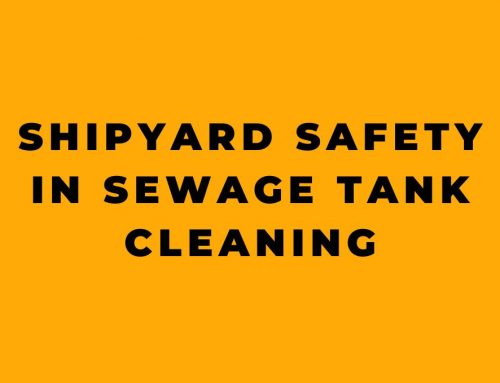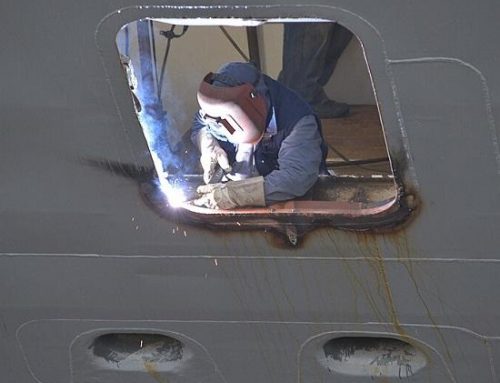Introduction
Working alone in isolated or confined spaces poses significant safety risks to employees in shipyard settings. Without regular contact or ability to monitor employees, injuries or incidents can go undiscovered, leading to severe or even fatal consequences. To address this issue, OSHA established requirements in 29 CFR 1915.84 to protect shipyard workers laboring alone. These provisions aim to prevent injuries and enhance emergency response through consistent employer verification of lone workers.
Understanding the hazards shipyard employees face when working alone and the key OSHA precautions mandated can literally save lives. This article will explore the details of 29 CFR 1915.84, including definitions of terms, examples of working alone scenarios, verification interval guidelines, and acceptable communication methods. It will also overview statistical data on prior incidents and provide recommendations to promote compliance and worker safety. Thoroughly grasping OSHA’s stance can empower employers to make informed decisions when assigning solo tasks.
Key Terminology
Before diving into the requirements, it is essential to understand vital vocabulary surrounding working alone:
Isolated Location: An area where employees labor alone or with minimal assistance due to the type, timing, or position of their work. Examples are remote areas or zones where workers are not near others.
Confined Space: A compartment big enough for entry but with limited access, e.g. double bottomed tanks, cofferdams, small tanks, etc. Their size and enclosed nature increase hazard exposure risks.
These definitions establish the kinds of shipyard areas covered by 29 CFR 1915.84 precautions. With this foundation set, we can explore situations that prompted the working alone provisions.
Incidents Prompting Action
OSHA based the requirements for shipyard workers laboring alone on alarming historical incidents. Between 2002-2012, there were 18 deaths involving employees working alone without regular oversight. In 17 of those cases, the workers were not discovered until after succumbing to sustained injuries.
The inability to detect or react to these severe or fatal injuries underscored the need for preventative standards. By mandating periodic checks and reliable communication/monitoring, OSHA aims to avoid future tragedies through early intervention and rapid emergency response.
With the immense risks clarified, we can delve into the particular stipulations and examples of working alone covered by 29 CFR 1915.84.
Specific Working Alone Examples
OSHA provides a starting point by outlining five working alone scenarios that require compliance with 29 CFR 1915.84:
- An employee laboring alone on a task at the distant end of a vessel, vessel section, or shipyard.
- An employee working alone in a hold, sonar space, or tank.
- Two employees working on either side of a metal partition.
- One employee doing hot work with a fire watch located elsewhere behind a bulkhead.
- An employee laboring alone in a confined space.
These examples establish a baseline for the types of solo or remote work triggering regulatory protections. However, the provisions extend beyond these exact cases to any situation where employees work with limited assistance or contact.
Employers must make reasonable judgments on the level of isolation and hazards involved with assigned tasks. When doubt exists, it is prudent to err on the side of caution and enact working alone precautions.
Accountability Intervals
The core protective requirement for shipyard employees laboring alone is regular employer verification at appropriate intervals. But what defines an suitable accountability schedule?
The standards state checks should occur at “intervals appropriate to the job assignment.” This means tailoring the frequency of verification to the work’s nature and risks. Brief or mundane tasks may only require a single check during the shift. However, higher hazard or longer duration jobs need assessments at multiple points.
For instance, an employee working several hours in a remote, confined space would need intermittent oversight to confirm their safety. Checks every hour or half hour are more reasonable than a single verification.
There are no defined time intervals specified in the standards. It is the employer’s responsibility to set an accountability schedule proportional to foreseeable risks. However, the minimum requirement is an initial and closing check bracketing the work.
No matter the task, employers must account for each worker at the job’s start and end. Failing to do so violates the lone worker provisions.
Acceptable Means of Verification
Thus far we have covered what working alone means and appropriate verification intervals. But what methods confirm employee safety and compliance with the standards?
OSHA delineates visual contact or verbal communication as the two validation avenues. Visual confirmation involves directly seeing the employee, either in-person or via camera/video feed. Verbal communication requires both parties speaking, e.g. phone, intercom, two-way radio.
Unreliable or one-way contact like whistles, power tool sounds, or tapping do not qualify. Cell phones are only permitted with demonstrated reception in the assigned work areas.
In summary, employers must use reliable two-way communication on regular intervals scaled to risks and duration. With accountability methodology established, we can explore other notable standard provisions.
Additional Provisions and Challenges Beyond core protections, the working alone standards contain further specifications employers should recognize:
- If an emergency rescue situation arises, all other OSHA confined space practices must still be followed for safe entry.
- Employers cannot demonstrate cell phone viability solely through manufacturer claims. Physical testing in the spaces is necessary.
When implementing the standards, employers may encounter difficulties like these:
- Remote areas of vessels can hamper communication, limiting reliable verification methods.
- Structural barriers or sizeable vessels make in-person visual checks impractical for one supervisor.
- Confusing standards language leads to uncertainty applying provisions appropriately.
Despite these hurdles, compliance remains compulsory. Employers must allocate proper resources and hazard analysis to select verification capacble of preventing incidents.
With key regulations and challenges summarized, employees should feel empowered interpreting when working alone standards are necessary and how to abide by them. But recall that the provisions ultimately serve one simple purpose – protecting valued workers from harm. No question of compliance should outweigh that guiding principle.
Conclusion
In closing, working alone unnecessarily endangers employees in hazardous shipyard settings. Failing to account for workers can severely delay emergency response, turning minor injuries into fatalities. OSHA’s 29 CFR 1915.84 provisions aim to prevent this through mandated supervision scaled to risks and reliable communication.
Thoroughly valuing and implementing these protective measures is no small responsibility. But the standards exist solely to preserve shipyard employees’ wellbeing and lives. Prioritizing worker safety and health above all else simplifies regulatory uncertainty. When employers embrace this mindset and furnish sufficient resources to comply, employees reap the benefits through direct impact on their daily welfare. And that shared commitment between worker and employer to prevent avoidable tragedy is the heart of OSHA’s mission.







